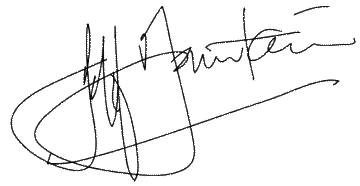Last week we described a trip out into Egypt’s western desert and discovered oases of spiritual life that inspired many dramatic conversions and transformations. We were left with the question, what was it about fourth century Coptic spirituality that was so attractive to our spiritual forefathers in Europe?
Frankly, some of these early monks’ attempts to live lives pleasing to God by extreme isolation and self-torture border on the weird. Such stereotypes encourage those of us raised as protestants to assume God went on vacation on a far distant planet soon after Paul’s death, and didn’t return until he saw Martin Luther striding off towards the Wittenberg door, hammer and scroll in hand. We have a hard time accepting that anything good may have come out of monasticism. We often don’t stop to think, for example, about who painstakingly translated and copied manuscript after manuscript, eventually handing down to us the Bible as we know it today.
But let’s try to imagine the emerging church – before Rome and Constantinople were the centres of powerful church systems, before there was any split between the eastern and western churches. The church in many parts of the Roman Empire was being persecuted. In Egypt, where Mark and others had brought the gospel in the first century, many took refuge in the desert. By the third century, thousands were out there living in caves alone or in small groups.
St Antony (251-356), whom we mentioned last week as the father of monasticism, was an intellectual from Alexandria, who experienced a radical conversion through the instruction of Jesus to the rich young ruler to sell all he had and give to the poor. Having done this himself, Antony set out to live a life of meditation and prayer in the mountains along the Red Sea coast. Admirers turned up at his cave in droves forcing him to retire deeper into the desert. Eventually realising his fans wanted spiritual guidance, he organised them into a loose community of hermits, and tutored them from a safe distance.
What Antony represented to his followers was radical discipleship. They too wanted to live in radical obedience to the instructions of Jesus. So Antony prescribed for them a simple rule of life, which has been followed by generations of monks ever since: ora et labora – prayer and work.
If persecution had initially driven radical believers into the desert in the first place, the official adoption of Christianity by Constantine after 313 AD was to create new waves of desert-dwellers. For although the new emperor now made it safe for monks and hermits to come out of the caves and catacombs, it was not long before many churches and leaders succombed to the temptations of influence and affluence.
Common life
Those seeking to flee the temptations of worldy pleasures, and pursuing intimacy with God, knew where they could find spiritual mentors – in the desert. Pachomius (c.285-346), a former military man, began to gather hermits into organised communities, thus pioneering cenobitic (greek: ‘common life’) monasticism. Kitchens, bakeries, water-cisterns, winepresses, workshops all became part of this new style monasticism. Pachomius believed a healthy body provided a healthy spirit, and avoided excesses of any kind, including extreme spiritual meditation.
When St Jerome visited one of Pachomius’ communities, he was impressed by the interaction with the surrounding community, who came for spiritual guidance or healing. The monks were not merely striving to save their own souls through solitary devotion. Jerome in turn helped to make this monastic lifestyle famous in the west and soon pilgrims began to come from all over the Christian world, as described last week, aided by the unrestricted possibilites for travel within a now-Christianised empire.
The new believers in Europe viewed the Copts as older brothers, having enjoyed a continuous church since apostolic times. The example of communities sharing a common life was highly attractive. After all, the old Roman order was disintegrating, and new building blocks were needed to rebuild a new European society. They could do worse than model their new life on communities built around prayer and work, around seeking intimacy with God, right relations with each other, and walking the way of the cross and self-denial.
Today’s abbot of the Monastery of Macarius calls this lifestyle “spiritual economy”. Father Matthew the Poor One explains that spiritual economy comprises both ‘inward economy’ – one’s personal spiritual life – and ‘outward economy’ – one’s relationships with others and the world. Spiritual economy, writes Father Matthew, always depends on, and springs from, three sources: the Bible, grace and a spiritual advisor.
When you think about it, what attracted our spiritual forefathers to the desert is not so much different from what attracts young people to attend a Discipleship Training School today. Call it spiritual economy.
Till next week,
Jeff Fountain
Till next week,
